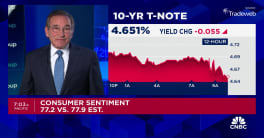The National Association of Realtors® and on-line real estate marketplace have unveiled a new housing affordability model. The model uses data on mortgages, state-level income information, and real estate listings to derive two measures of availability and affordability.
The data results first in an Affordability Distribution Curve which examines how many listings are affordable to buyers in a particular income percentile. The second measure, the Affordability Score, is a calculation equal to twice the area below the Affordability Distribution Curve on a graph. Confusing, especially without seeing the graph, but we trust it is enough to know going forward that this number will vary between zero and two. A score of one or above indicates a market where homes for sale are more affordable to households in proportion to their income distribution.
NAR says the model's debut shows a growing rift between housing availability and affordability. While existing home sales are expected to gain 1.7 percent in 2017, homebuyers at many income levels could see an inadequate number of listings on the market within their price range in coming months.
Lawrence Yun, NAR chief economist, says a top complaint Realtors have been hearing from clients is a notable imbalance between what they can afford and what is listed for sale. "Home prices have ascended far past wage growth in much of the country in recent years because not enough homeowners are selling and homebuilders have not boosted production enough to meet rising demand. The new affordability measure confirms, that buyers aren't exaggerating about the imbalance. "Amidst higher home prices and now mortgage rates, households with lower incomes have been able to afford less of all homes on the market last year and so far in 2017."
The entire distribution curve in January was below the equality line, reflecting a growing shortage of accessible inventory for most income groups. The gap was generally wider at lower incomes, which indicates even tighter supply conditions. For instance, a household in the 35th percentile could afford 28 percent of all listings, a median income household, that is income in the 50th percentile could afford 46 percent of listings and a household in the 75th percentile was able to afford 74 percent of active listings. If, in the first instance, buyers in the 35th percentile could afford 35 percent of listings rather than 28, we assume that would result in an Affordability Score of 1.
"Consistently strong job gains and a growing share of millennials entering their prime buying years is laying the foundation for robust buyer demand in 2017," said Jonathan Smoke, chief economist at realtor.com® "However, buyers with a lower maximum affordable price are seeing heavy competition for the fewer listings they can afford. At a time of higher borrowing costs, this situation could affect affordability even more as buyers battle for a smaller pool of homes and bid prices upward."
January's Affordability Score further highlights the disjointed rate of accessible supply on the market across the U.S. Price growth coupled with high mortgage rates created a January national affordability score of 0.92 percent compared to 0.97 percent in January 2016. (Remember, "a score of one or above indicates a market where homes for sale are more affordable to households in proportion to their income distribution.") Only 19 states had a score above one and only three - North Dakota, Alaska and Wyoming - saw year-over-year gains in their score.
"Heading into the beginning of the spring buying season, available supply is more reachable for aspiring buyers in the upper end of the market and specifically in nearly all Midwestern states," said Smoke. "Meanwhile, many states in the West and South have seen deteriorating supply levels over the past year. Buyers in these areas should know that it may take longer to find the right home at a price they can afford."
The highest affordability scores in January were found in Indiana (1.23), Ohio (1.22), Iowa (1.18), Kansas (1.17), and Michigan and Missouri (both at 1.14). The states with the lowest scores were Hawaii (0.52), California (0.60), District of Columbia (0.65), and Montana and Oregon (both at 0.67).
"This shortfall of inventory at a time of healthy job gains in most states is one of the biggest reasons for the depressed share of first-time buyers and the inability for the homeownership rate to rise above its near-record low," added Yun. "The only prescription to reversing this adverse situation is to build more entry-level and mid-market housing that aligns with current household incomes."







